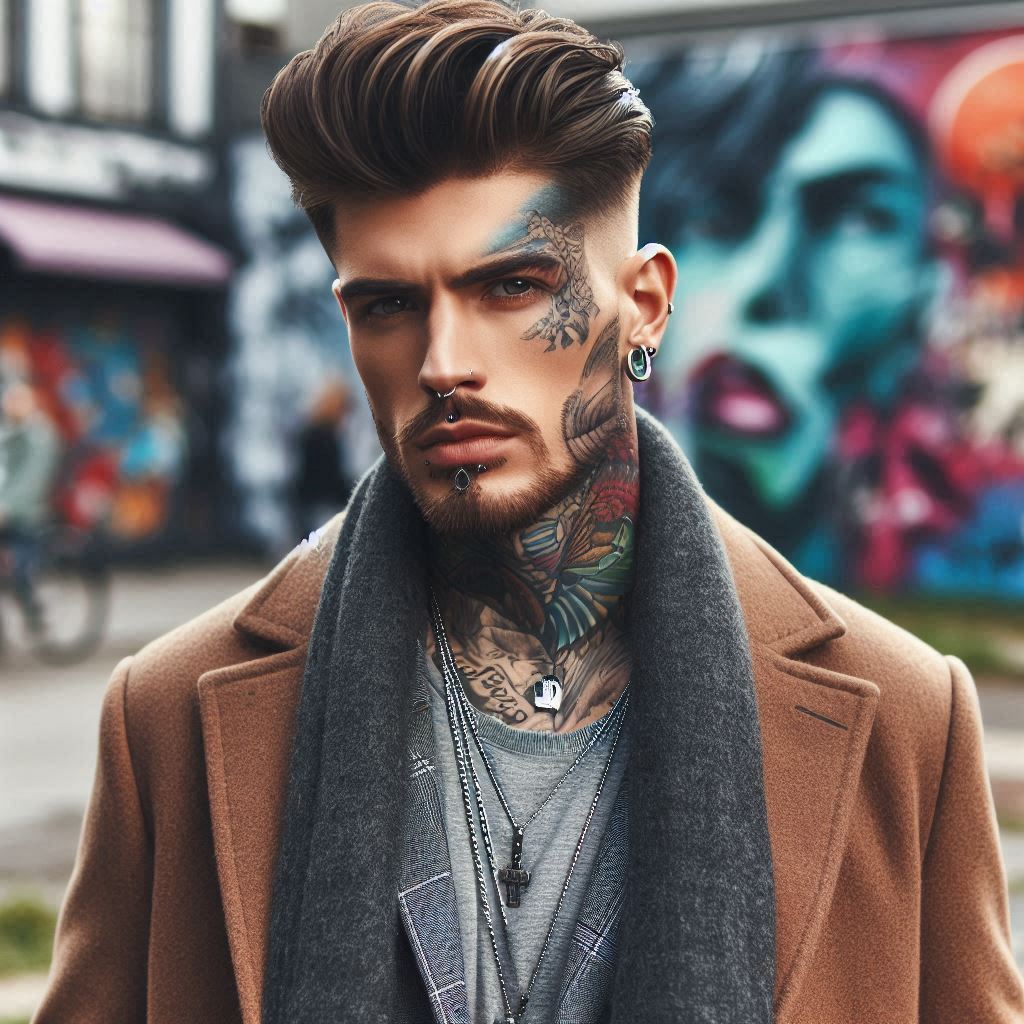Why do face tattoos elicit such intense feelings?
Face tattoos are a lightning rod for judgment. Some see them as rebellion and danger; others, as unbridled self-expression. Unlike ink tucked under clothing, face tattoos shout something louder. They’re public. Permanent. Unapologetically visible. And that visibility causes people to respond—often viscerally.
How are face tattoos different from other tattoo placements?
A face tattoo can’t be tucked away under a sleeve. There’s no hiding it behind jeans or under a blazer. It confronts the viewer head-on—literally. That’s what sets it apart. It’s not just a design. It’s a declaration.

Where Did the Concept of Tattooing the Face Begin?
What ancient cultures practiced face tattooing?
Before tattoos were art, they were identity. Prehistoric times have the earliest recorded facial tattoos. Mummified bodies in Siberia and Egypt allude to rituals dating thousands of years ago. The practice crossed geography—occurring in Africa, Oceania, Asia, and the Americas. Face tattoos were not rebellion. They were sacred.
How did tribal societies use face tattoos to express identity?
In most indigenous cultures, markings on the face weren’t vanity—they were status, lineage, accomplishment. They were history: who you were, where you were from, what you’d lived through. It wasn’t body art. It was a living passport.
Why Were Face Tattoos So Important in Indigenous Cultures?
What did face tattoos represent in Māori society?
Māori of New Zealand had the ta moko, which are complex tattoos cut into the face. They were not arbitrary. Every curve and twist charted an individual’s lineage and deeds. For a Māori man, it was a rite of war. For women, a moko kauae chin tattoo indicated spiritual and social adulthood.
How did Inuit women apply face tattoos as rites of passage?
Facial tattoos in Inuit communities represented womanhood and strength. Horizontal lines incised on the chin and cheeks were signs that indicated the initiation from girlhood to womanhood, a holy ritual often coupled with other coming-of-age rites such as hunting or childbirth.
Were face tattoos prevalent in Native American tribes?
Yes—particularly among Pacific Northwest and Alaskan tribes. Some used face tattoos for protection from spirits. Others wore them as badges of honor or spiritual guides. Every line had significance. Every dot served a purpose.
When Did Face Tattoos Begin to Fall Out of the Mainstream?
What was the role of colonization in the decline of face tattoos?
Colonizers tended to look at native customs through an optic of ignorance. Rituals were “primitive.” Tattoos were savage. Colonial governments in countries such as New Zealand and North America outlawed tattooing. Sacred ink was wiped out in favor of assimilation.
How did Western ideals influence tattoo stigma?
The industrialized West identified tattoos with sailors, criminals, and outcasts. Particularly on the face. When tattoos departed from ritual and headed toward rebellion, society’s attitude grew cold. Visible tattoos became code for “trouble.”
When Did Face Tattoos Re-emerge in Popular Culture?
How did prison culture affect the contemporary view of face tattoos?
In prisons worldwide, face tattoos bore secret meanings—membership, status, survival. The teardrop, the spider web, the numbers—these were not ornaments. These were storybook lives written in desperation. Alas, when those people entered society again, so did the baggage.
What was the contribution of punk and hip-hop toward making face tattoos mainstream?
By the late ’80s and ’90s, tattooed artists started getting face ink back. Punk rockers utilized it to subvert conformity. Rappers utilized it to claim their reality. With hip-hop blowing up worldwide, face tattoos transitioned from back alleys to front stage.
Who Were the First Celebrities to Popularize Face Tattoos?
How did artists like Lil Wayne and Post Malone change the narrative?
When Lil Wayne had his face tattooed in the early 2000s, it was groundbreaking. Suddenly, mainstream musicians were tattooed for all to see—and they were unapologetic about it. Post Malone’s “Always Tired” and other quirky tattoos made it seem almost… commonplace. Even stylish.
Why do celebrities often opt for visible ink?
They need not fear corporate careers and interviews. Their face is their brand. Signing it is an expression of control—a defiant declaration of independence in an image-obsessed world.
Why Are Face Tattoos Becoming More Accepted Today?
Are face tattoos taboo anymore in the workplace?
In most traditional industries, yes. Finance, law, education—visible ink is still taboo. But with the gig economy, self-employment, and influencer culture on the rise, many are creating their own norms. Face tattoos aren’t barriers anymore. They’re part of the brand.
How are younger generations redefining beauty and expression?
Millennials and Gen Z are not so concerned with blending in. To them, beauty is authenticity. Whether dyed hair, piercings, or face tattoos, the message is the same: This is me—unfiltered, uncensored, untamed.